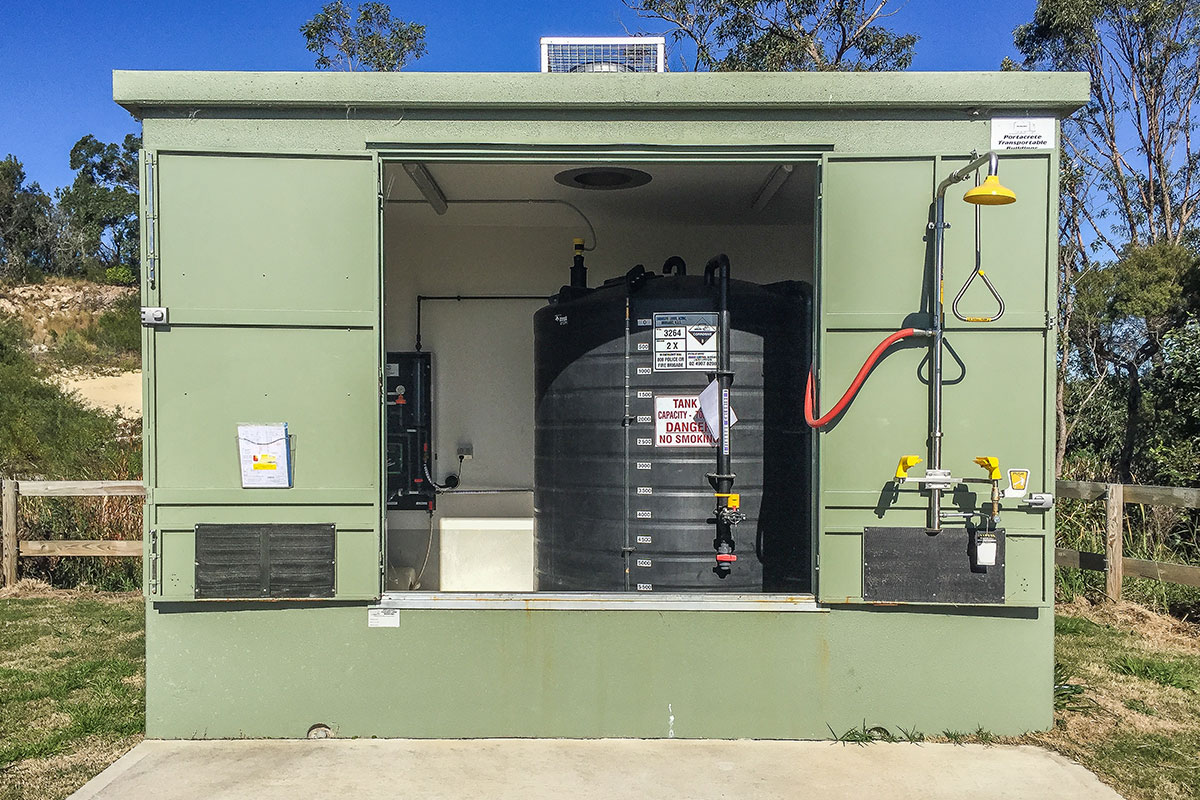Chemical Dosing Systems Australia
Chemical dosing can rid up to 95% of odours
OdourPro is Australia's industry leader in comprehensive air and wastewater odour control and management, with a variety of chemical dosing odour control systems available. The double benefit of reducing toxic gas emissions as well as corrosion to wastewater facilities makes chemical dosing a popular option for odour management.
Designed for effective odour control in wastewater treatment, chemical dosing has uses in sewer manholes, pump stations and rising mains. OdourPro's complete approach to odour management makes sure that you get the right odour solution for your particular site. We also offer ongoing maintenance, monitoring and chemical delivery to ensure your system continues to perform at its peak.
Chemical dosing uses and applications
- Used for wastewater odour control
- Controls the level of H₂S downstream from dosing point
- Reduces the emission of H₂S gas by up to 95%
- Lessens corrosion of wastewater system facilities by H₂S gas
- Ensures compliance with Work Health Safety (WHS) Regulations

For more information on product specs, site layout diagrams and operation manuals view our document library
Enquire about chemical dosing
What is a chemical dosing system for odour control?
The system comprises of two key components; the control panel and the dosing pump. The control panel is used to set parameters such as flow rates, reagent concentrations and contact time. The dosing pump is used to inject the reagent into the wastewater at a controlled rate.
There are many different types of chemical dosing systems, each with their own advantages and disadvantages. The most common type of system is the aerobic system, which uses oxygen to control septicity. Other types of systems include anaerobic, nitrifying, and denitrifying systems.
Aerobic systems are the most common type of chemical dosing system for odour control. They use oxygen to control septicity and are typically used in wastewater treatment plants. Aerobic systems are advantageous because they are relatively simple and easy to operate.
Anaerobic systems use bacteria to break down sewage. They are typically used in septic tanks and anaerobic digesters. Anaerobic systems do not require a constant supply of oxygenm making them the best choice where air supply is restricted..
Nitrifying systems use bacteria to convert ammonia into nitrites and nitrates. They are typically used in wastewater treatment plants. Nitrifying systems are highly effective at removing ammonia from wastewater.
Denitrifying systems use bacteria to convert nitrites and nitrates into nitrogen gas. They are typically used in wastewater treatment plants to remove nitrates from wastewater.
Choosing the right chemical dosing system for your needs depends on a number of factors, including the type of wastewater you are treating, the concentration of pollutants in the wastewater, the volume of wastewater you need to treat, and your budget. If you are not sure which type of system is right for you, consult with a wastewater treatment expert at CleanaWater today.

Gallery
Document Centre
Why choose Cleanawater for your Chemical Dosing System
Cleanawater has over 25 years of experience in odour management, including the supply and management of containerised chemical dosing odour control systems. These facilities automate the injection of reagents into wastewater networks controlling septicity and odour emissions.
We get to the root of the odour issue with a thorough consultation and evaluation process to ensure we find the best odour control solution for your site.
Ferrous Chloride Dosing – Ferrogard®
USES AND APPLICATIONS
- Highly effective chemical dosing odour control
- Delivers peace of mind
- Lowers corrosion levels
- Dosing tailored to system needs
- Suitable for variable grade pipelines
- Dosing administered at precise times
- Will not de-gas in the main
- Reduced maintenance costs
Magnesium Hydroxide Dosing – Magnagard™
USES AND APPLICATIONS
- Environmentally-friendly chemical dosing odour control
- Reduces odour by up to 80%
- Proven history of reliable results
- Aids eradication of suspended solids
- Efficient method of heavy metal elimination
- Allows sludge to go to landfill (no encapsulation required)
- Saves you money on sludge disposal
- Environmentally friendly
Calcium Nitrate Dosing
USES AND APPLICATIONS
- Non-toxic, effective chemical dosing odour control
- Reduces odour by up to 90%
- Stops odour problems at their cause
- Initiates a long-term, comprehensive odour solution
- Tried and tested method of odour and corrosion prevention
- Saves time and money on system maintenance
- Ensures compliance with Work Health Safety (WHS) Regulations
- Environmentally friendly
Micronutrient Additives
USES AND APPLICATIONS
- Natural, effective chemical dosing odour control
- Used in stored wastewater and water treatment systems
- Can be applied as a foam to odorous solid or liquid surfaces
- Diminishes odour production through cultivation of facultative bacteria
- Catalyses rapid odourless breakdown of organic waste
- Safe and non-toxic
- Natural and biodegradable
- Saves on clean up time and cost